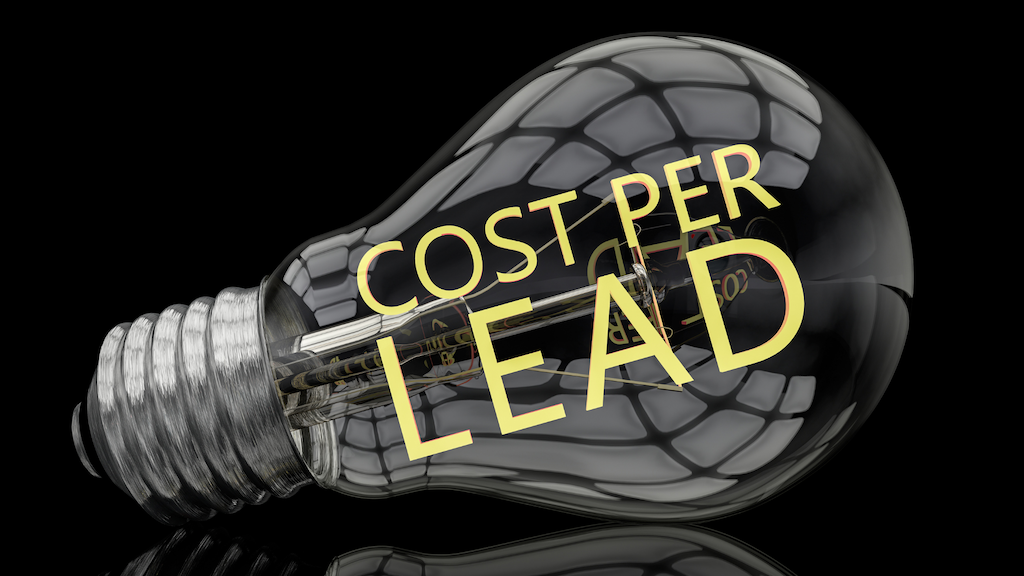If you’re a business owner, the cost per customer is probably one of your most important metrics. In simple terms, it’s how much you spend to acquire a new customer or client. And how much that associate is worth to you.
Your lead expense is an important metric for two reasons:
- It tells you how much money you’re spending on marketing.
- If you’re spending $100 on ads that generate 100 inquiries at $1 each, your cost is $1 each. Your business will become better with more sales at the same price point or fewer leads at a higher price point.
You can use it as part of your ROI calculation. Do it when it comes time to evaluate whether or not an advertising campaign was successful.
What Is Cost Per Lead?
A cost per Lead (CPL) measures how much it costs to attract one customer. It’s used in business to help determine the profitability of marketing campaigns. Marketing professionals use it to evaluate the performance of their campaigns. It is also known as cost per acquisition (CPA), as it shows how much it costs to acquire a customer (or Lead). This can be useful when comparing different advertising and marketing campaigns, such as radio ads versus Google AdWords.
It’s a metric to determine the expense of a marketing campaign.It equals the total cost of a campaign divided by the number of leads generated. For example, if your company spends $10,000 on advertising and receives 100 customers, then the conversion expense is $100. This metric is important because it helps you understand how much each new customer will impact your business.
Cost Per Lead Example
When deciding what kind of advertising to use for your business, you need to know how much each type will affect you. For example, if you want to buy Google ads. But don’t want to spend more than $2 per click, it’s better to choose text ads over image ads because they tend to have lower costs per click.
You can also use this metric when comparing different strategies or tactics for making sales. If one strategy generates more traffic, but at an increased rate per Lead, then it may not be worth using in favor of another one that generates fewer opportunities but at a lower price tag per one.
What Is A Good Cost Per Lead?
A good CPL for your business will be highly dependent on the type of business you’re in. Suppose, you are in a very competitive niche with a lot of other businesses competing for business. Then you’ll need to pay more for each lead that you generate. If you happen to be in an area that has fewer businesses competing for leads, then you can probably get away with paying less per Lead.
The best way to figure out your ideal CPL is by looking at the average price point of what people are paying in your industry. If they’re paying $50 per Lead, then it’s probably not worth it to spend $10 per prospect when you can get them for $5 or $10 cheaper!
The higher quality your leads are, the more likely they are going to convert into sales once someone from your company has contacted them!
Why Should You Use Cost Per Lead?
The main reason why you should use CPL is to understand how much money you are spending on your marketing campaigns. One of the most important metrics in marketing is conversion rate. This is the percentage of visitors who complete a desired action on your site.
It helps you track this metric by determining how much money you spend to get one conversion. For example, if it costs $10 to get a customer and that client buys something worth $50. Then your CPL is $10.
It also allows you to determine whether or not your current strategy is working effectively or if it needs adjustments.
How Does Cost Per Lead Work?
It is one of the most important factors when determining how to price your services. The CPL is a measure of how much it costs you to acquire a new customer. You can use it to determine if you are charging enough for your services. Also, if there are any changes that need to be made.
When we talk about CPL, we are talking about the CPL generated by a campaign. The total amount of the campaign includes all expenses associated with running it. Moreover, it includes agency fees and salary costs for staff involved in planning and implementing the campaign. The number of inquiries includes all qualified visitors – those who have requested more information or responded to another form of follow-up from your organization.
You can calculate it by dividing your total advertising costs by the total number of clients that you receive from a campaign. For example, if you spend $10,000 on an advertising campaign and receive 100 leads, then your CPL would be $100. If this number is higher than what other companies are charging for similar services, then you may have a pricing problem on your hands.
How To Calculate Cost Per Lead?
It is a metric that measures the effectiveness of your marketing campaign. It’s calculated by dividing your total costs by the number of new opportunities you generate. This metric is especially important to track if you’re using paid advertising to generate clients for your business. The CPL can help you determine whether or not it’s worth continuing to invest in paid ads.
You can calculate using the following cost Per Lead formula.
Cost Per Lead = Total Marketing Cost / Number of New Customers
It will vary depending on various factors, including the length of time you’ve been advertising and the type of ad you’re using (e.g., Google AdWords).
You can also use a cost per lead calculator.
To determine what your expense per customer should be, ask yourself the following questions:
- How long have you been advertising? If it’s been less than 12 months, then expect costs to rise quickly at first as you build up your account’s quality score. But as your quality score improves and becomes more stable, costs will stabilize and eventually decline. This will happen until they reach an equilibrium point where they’ll remain over time.
- How much are you willing to spend? This is important because if you set a limit on how much you’re willing to spend each month and stick with it. Then you won’t go over budget accidentally. You can also use this figure as a benchmark when comparing different types of advertising channels like display ads and video ads.
Here are a few tips to help you calculate:
- Calculate the expense of each ad campaign separately. If you’re running multiple campaigns at once, it’s important to keep track of how much each one costs. So that you can compare them later on and see which ones were more successful than others.
- Determine how many inquiries each ad campaign generated (i.e., how many people clicked on your ad). If you’re using Google AdWords, for example, this information will be available in the “Performance” tab on your campaign dashboard once it ends. The number of clicks will be listed under “Clicks.”
- Once you have determined what qualifies as a lead, then you can start calculating how much each one costs.
- To find out how much each lead costs, simply divide the total price of generating leads by the number of prospects generated by those efforts.
There are two main ways to calculate CPL:
Revenue-based model:
In this method, you divide your total sales revenue by the number of leads generated to arrive at CPL. For example, if your total sales revenue from 100 leads was $1 million and each customer charged you $50, then your CPL would be $50.
Cost-based model:
In this method, you divide your total marketing costs by the number of customers generated to arrive at CPL. For example, if it costs you $500 to generate one Lead and each Lead generates $10 in revenue for you, then your CPL would be 1%.
Best Ways To Reduce Your Cost Per Lead
Your (CPL) relates directly to your business’s conversion rates. But it can also be affected by other factors such as the quality of your subscribers and the number of traffic that you generate per month.
If your CPL is too high, then you need to reduce it. There are several ways to do this:
-
Increase conversions
Increasing your conversion rate will reduce your CPL automatically. This is because you are reducing the number of leads that you have to pay for. Also, it’s probably the best way to improve your CPL because it also reduces costs in other areas such as customer support and product development.
-
Reduce the Budget of your Advertising
One of the easiest ways to reduce your CPL is by reducing the budget of your advertising. How? By finding cheaper advertising platforms that drive more traffic and convert better than others. If you can find a platform that works better for your business at a lower price point, then go for it! If not, then try lowering your budget until you find one that works nicely for both parties involved.
-
Improve your Landing page design
Optimize your landing page for conversions. In order to get more leads, you have to optimize your landing page for conversion. If people can’t find what they’re looking for on your landing page, they won’t convert into customers and become customers.
-
Find easy ways to get your audience
Use social media advertising instead of PPC campaigns. Social media ads can be a great way to reach new audiences at an affordable price point compared to paid search ads (PPC). You can also use social media ads for branding purposes as well as generating leads.
Summary
It is one of the most important metrics in digital marketing. Many businesses cannot afford high prices per customer, so they often look for a low fee per lead alternative. If your competition has a low CPC and high conversion rate, then you might want to up the ante by offering your services for a lower rate per customer.
FAQ
What does Cost Per Lead (CPL) mean?
Cost Per Lead (CPL) is a marketing metric that calculates the average cost incurred by a business to acquire a single lead. It measures the efficiency of a marketing campaign by evaluating the amount spent on generating leads relative to the number of leads obtained.
Why is understanding CPL crucial for businesses?
CPL is essential for businesses as it helps in assessing the effectiveness of their marketing efforts. By knowing the cost associated with acquiring a lead, businesses can make informed decisions about resource allocation, optimize campaigns, and enhance overall marketing ROI.
How is Cost Per Lead (CPL) calculated?
CPL is calculated by dividing the total cost of a marketing campaign by the number of leads generated. The formula is: CPL = Total Campaign Cost / Number of Leads Obtained.


